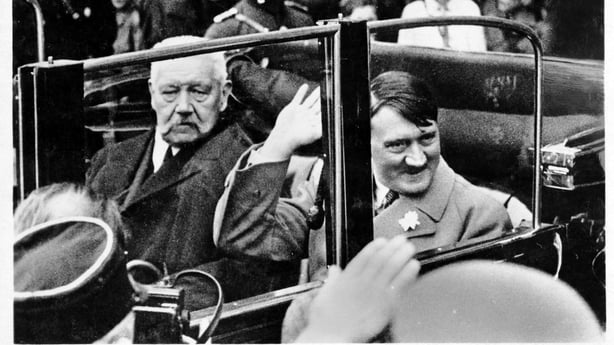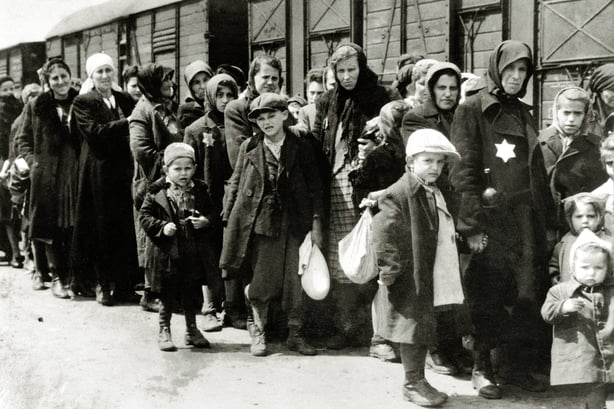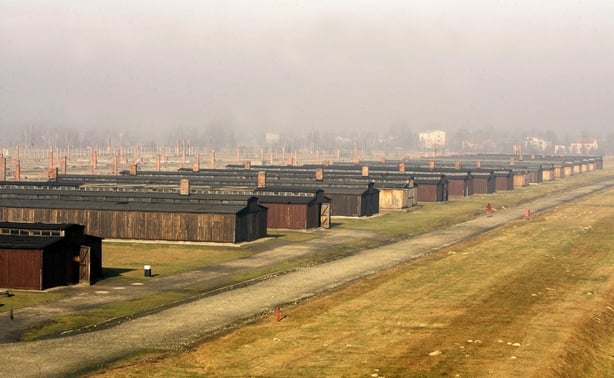The Nazi death camp of Auschwitz-Birkenau, which was liberated 80 years ago, is an enduring symbol of the Holocaust.
Part of German dictator Adolf Hitler's 'Final Solution' plan for the genocide of European Jews, the camp operated near the occupied southern Polish town of Oswiecim between June 1940 and January 1945.
It was the largest and most notorious of the Nazi extermination camps, where the most victims were killed.
Of the more than 1.3 million people imprisoned there, 1.1 million - mainly Jews - perished, either from asphyxiation in the gas chambers or from starvation, exhaustion and disease.
With the world marking the 80th anniversary of the liberation of the camp by Soviet troops on Monday here is its history, based on information from the Auschwitz-Birkenau Memorial and Museum.

1939 - World War II starts
On 1 September, Nazi Germany invades Poland, starting WWII in Europe. Nazis massacre Polish Jews or force them into ghettos, start to wipe out Poland's elites and attempt to squash resistance.
1940 - Auschwitz camp created
On 27 April, Schutzstaffel (SS) leader Heinrich Himmler picks a site of barracks in Oswiecim, southern Poland, which is renamed Auschwitz.
On 14 June, the first 728 Polish political prisoners arrive.
In the autumn the resistance informs the exiled Polish government in London about the camp. It tells the Allies.
1941 - First mass gassing
On 1 March, Himmler inspects Auschwitz and orders its expansion.
On 22 June, Germany invades the Soviet Union, breaking a 1939 pact with Joseph Stalin and sends prisoners of war to the camp.
The first mass gassing with Zyklon B of 600 Soviet POWs and 250 Poles takes place on 3 September.

1942 - 'The Final Solution'
On 20 January, the Nazis draw up plans for the 'Final Solution', the genocide of Europe's Jews. That month the mass gassing of Jews in Auschwitz begins.
The huge Birkenau or 'Auschwitz II' camp opens nearby on 1 March.
That same month, the first mass deportation of Jews to the camp takes place, with 69,000 from France and 27,000 from Slovakia.
In May, 300,000 Jews are sent from Poland, and 23,000 from Germany and Austria. On 4 May, the first Birkenau 'selection' of arriving prisoners takes place, separating those slated for slave labour from those to be gassed immediately.
On 10 June, the Birkenau revolt takes place. Seven prisoners escape and 300 die. In July, 60,000 Jews are sent from the Netherlands.
Later, in August, 25,000 Jews are sent from Belgium and 10,000 from Yugoslavia while on 30 October, the 'Auschwitz III-Monowitz' factory camp opens.
In October, 46,000 Jews are sent from today's Czech Republic and in December, 700 Jews are sent from Norway.

1943 - Roma camp set up
On 26 February, the Camp for Roma is set up at Birkenau. In March, 55,000 Jews are sent from Greece and on 7 October, 500 Jews are sent from Italy.
1944 - Allies discover camp
In May, Allied planes photograph the camp, spotting the gas chambers and smoke. Britain and the United States later bomb Monowitz. Meanwhile, 438,000 Jews are sent from Hungary.
In August, 67,000 Jews are sent from the Lodz ghetto in Poland and on the second day of that month 3,000 Roma are gassed. In all, August saw 13,000 Poles sent to the camp following the Warsaw Uprising.
On 7 October, 'Sonderkommandos', the Jews who were forced to burn the bodies from gas chambers, revolt. Three SS men and 450 Sonderkommando prisoners die.
In November, the mass gassing ends.
1945 - Soviet troops arrive

On 17 January, as Soviet troops advance toward the camp, the SS force 60,000 emaciated prisoners to walk west in what becomes known as the 'Death March'.
From 21-26 January, the Germans blow up the Birkenau gas chambers and crematoria and withdraw as Soviet troops approach.
On 27 January, Soviet troops arrive, finding 7,000 survivors.

